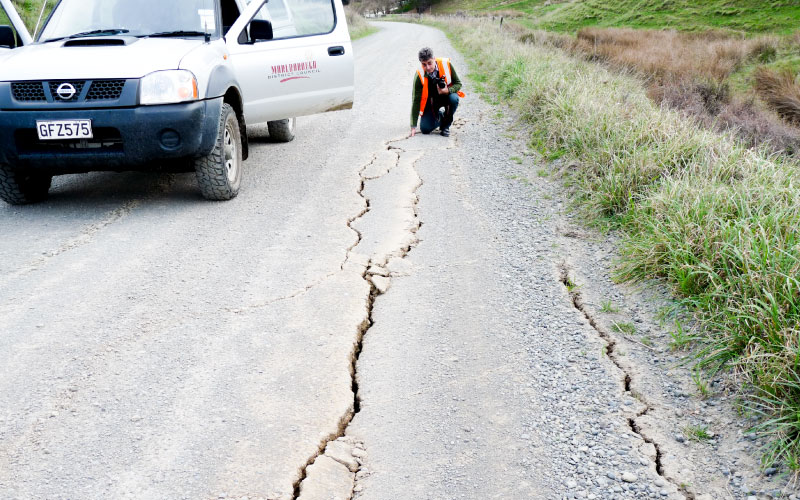Council’s Blenheim office will be closed from 4.30 pm Thursday 17 April and will reopen on Tuesday 22 April at 8.30 am. See details of transfer station opening hours and kerbside collections

Council’s Blenheim office will be closed from 4.30 pm Thursday 17 April and will reopen on Tuesday 22 April at 8.30 am. See details of transfer station opening hours and kerbside collections


The nature of Marlborough's climate, topography and geology combine to create the potential for significant natural hazards. Flooding, land instability, earthquakes, storm surges, fire and drought have all been experienced in living memory.
Some natural hazards, such as flooding, create localised risks, while others could affect the whole area eg; earthquakes. In many cases, natural hazards cannot be controlled or contained by humans. The impacts of a hazard can be made worse because of the pattern of settlement and development.

Much of the responsibility for civil defence planning and response is carried out by the Marlborough Civil Defence Emergency Management Group, which includes Council, the Nelson/Marlborough District Health Board, the police and fire services. An Emergency Management Plan has been prepared to manage hazards and risks in accordance with the principles of reduction, readiness, response and recovery.
The Marlborough Engineering Lifelines Group has been set up to reduce damage following a major disaster and reduce the time lifeline utilities (roads, water supply, power supply, communications etc), will take to restore their usual level of service after an event.
Go to Emergency Management page
The Proposed Marlborough Environment Plan has a range of rules and other methods to limit the impact of natural hazards on certain land uses.
Go to the Proposed Marlborough Environment Plan page
The Building Act requires local authorities to develop a policy for those local buildings most vulnerable in a moderate earthquake. The Council's policy requires the earthquake risk of mostly non-residential buildings to be evaluated and requires earthquake prone buildings to be strengthened. An assessment of buildings at risk has been carried out and property owners notified of the need for the buildings to be strengthened.